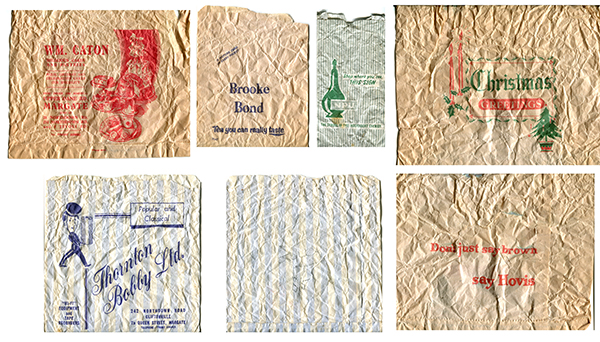
Today’s image for Day 295 of the VM_365 project shows some examples of the paper bags from the archive box , which contained sherds of pottery from the Seacroft Road dig from 1965 that we have been examining in posts for Day 292, Day 293 and Day 294 of the VM_365 project. The paper bags are the next step of understanding what the archive holds and we have been cataloguing the contents and repackaging them into archivally stable polythene bags.
The paper bags date from the 1960’s and possibly 1970’s and are historic artefacts in their own right. Two are from specific Margate local businesses, W. M. Caton, a baker in Upper Dane Road, Margate (top left) and Thorton Bobby Ltd (bottom left and middle) a long established electrical goods business in Northdown Road.
The bag from WM Caton, a bakery business which no longer exists, advertises ‘Delicious cakes and Pastries. Bride, Brirthday and Celebration Cakes our speciality’ and apart from their head office and Bakery at Upper Dane Road also advertises three other Margate based outlets of the business, two on Northdown Road and one in Tivoli Road.
The bag from Thorton Bobby Ltd advertises that they sell records ‘Popular and Classical’ and ‘Hi-Fi Equipment and Tape Recorders’ in their two shops in Northdown Road and Queen Street, Margate. Thorton Bobby still operates in Margate and branched out into selling electrical goods, not just records and Hi-Fi equipment although it is now known as Euronics Thornton Bobby.
The other bags advertise specific brands including Brooke Bond tea ‘A picture card in every packet’ and ‘Tea you can really taste’, NPU Chemists ‘Shop where you see this sign’ and the symbol of the independent Chemist’ and Hovis ‘Christmas Greetings’ and ‘Don’t just say brown… say Hovis’. The Brooke Bond and Hovis bags were probably from local grocery shops where the majority of people would have obtained their groceries before the expansion of supermarket chains and large everything-under-one-roof superstores.
More importantly for the purposes of the archaeological archive, a few of the paper bags had information about their contents written on them in pencil. The Thorton Bobby bag (centre bottom) was inscribed ‘Gully B5’ in pencil and this has been transcribed onto the new packaging in case it helps to understand where the material came from. When an archive of this age is examined, it is important to examine all aspects of it, including what might appear to be ephemeral or expedient packaging. A note written in haste on a bag picked up from a local shop may just hold the clue to the significance of the contents or the whole archive.
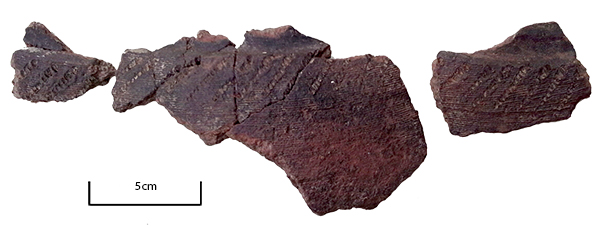 Today’s image, for Day 299 of the VM_365 project, shows six joining sherds and two other sherds from the decorated shoulder of the same Late Iron Age vessel. The sherds belong to the pottery assemblage that we have been examining in our VM_365 posts, all contained in the the box of archive from the 1964 excavation at Broadstairs.
Today’s image, for Day 299 of the VM_365 project, shows six joining sherds and two other sherds from the decorated shoulder of the same Late Iron Age vessel. The sherds belong to the pottery assemblage that we have been examining in our VM_365 posts, all contained in the the box of archive from the 1964 excavation at Broadstairs.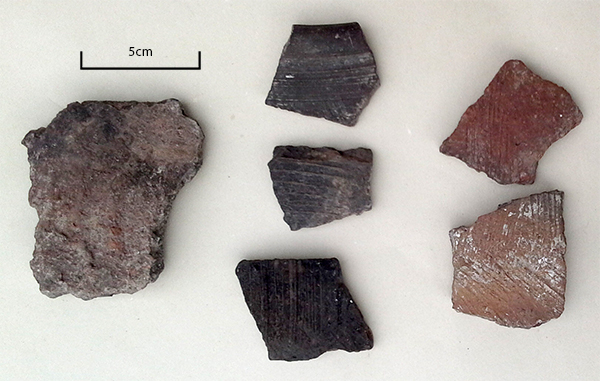

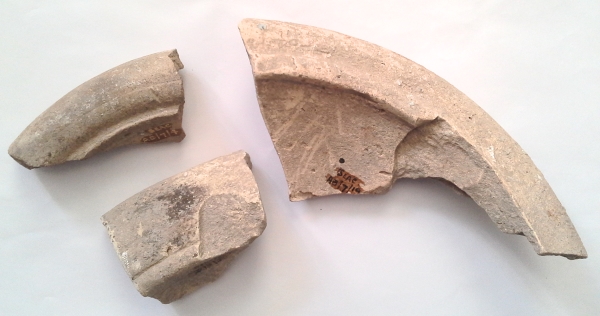 The image today, for Day 296 of the VM_365 project, is of three sherds of Roman Mortaria, giving a closer look at
The image today, for Day 296 of the VM_365 project, is of three sherds of Roman Mortaria, giving a closer look at 
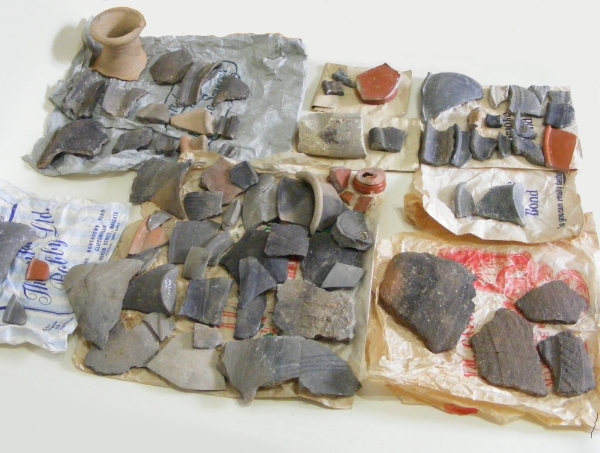
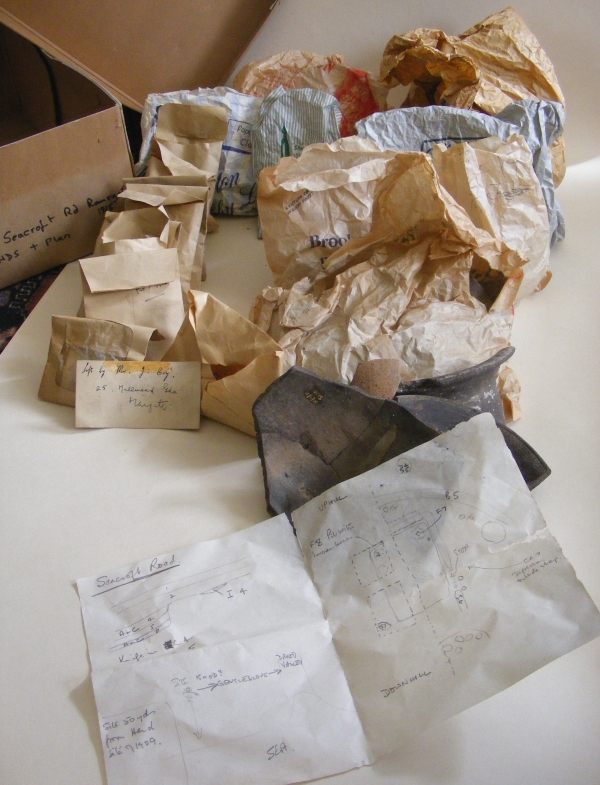
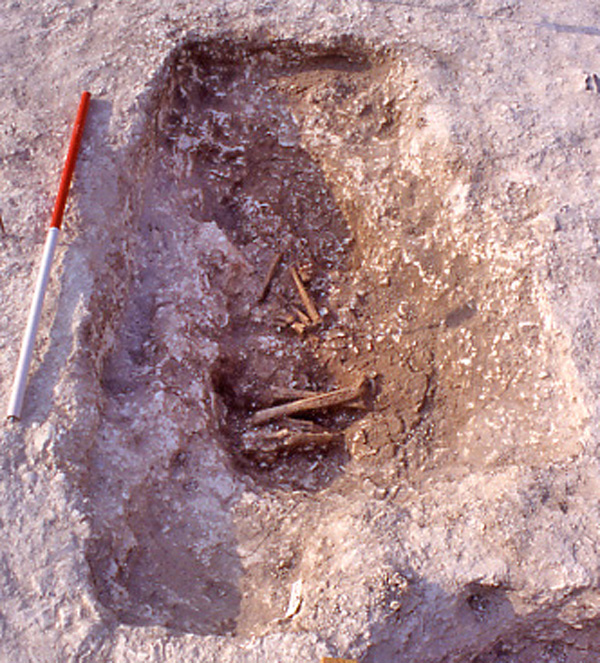
 For the image on Day 289 we have a picture of the ring ditch of a small round barrow, located at the western edge of the St. Stephens College excavation site at North Foreland, Broadstairs. The barrow stands on the crest of the chalk ridge with the land falling away to the north and north west.
For the image on Day 289 we have a picture of the ring ditch of a small round barrow, located at the western edge of the St. Stephens College excavation site at North Foreland, Broadstairs. The barrow stands on the crest of the chalk ridge with the land falling away to the north and north west.